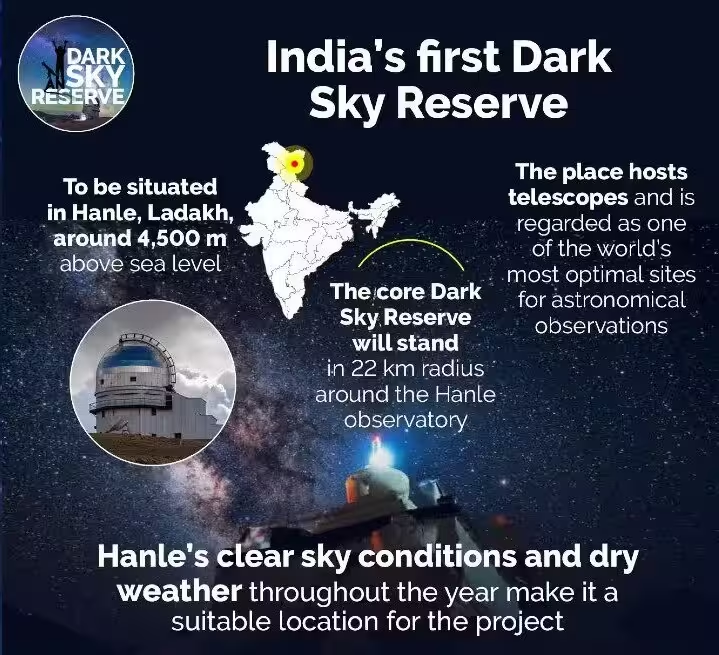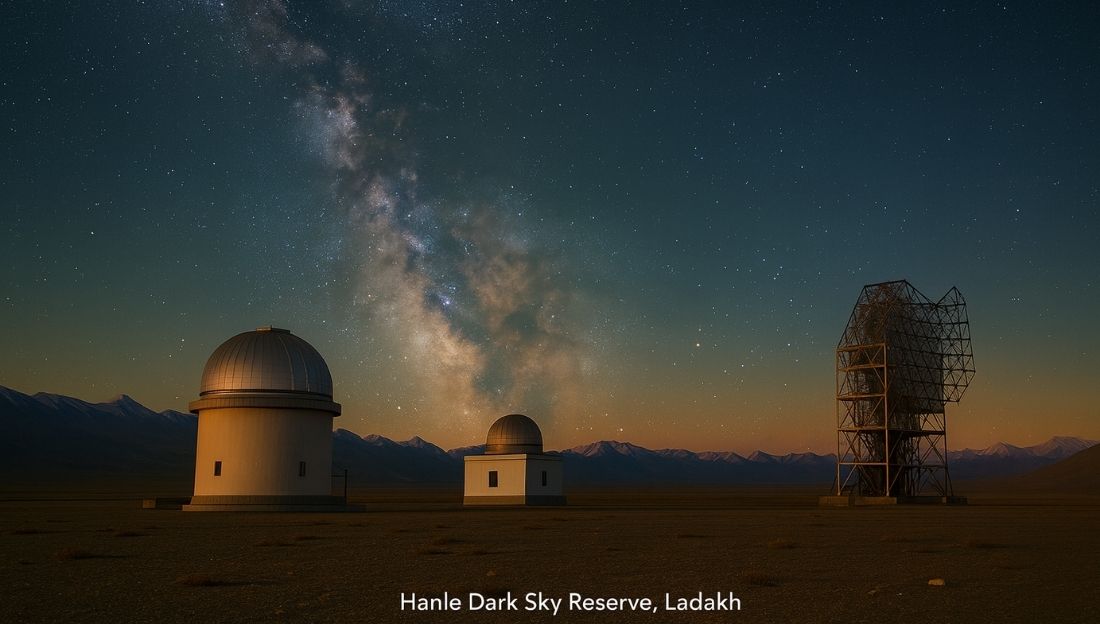The Hanle Dark Sky Reserve in Ladakh has gained attention for successfully combining astronomy, conservation, and local development. It is India’s first designated dark sky reserve, preserving clear Himalayan skies and promoting sustainable astro-tourism.
About Hanle Dark Sky Reserve
- Located in Hanle village, Ladakh, within the Changthang Wildlife Sanctuary.
- Recognised as one of the world’s darkest sites (Bortle-1 rating) — ideal for astronomical observation.
- Established under a MoU between the Indian Institute of Astrophysics (IIA), the UT of Ladakh, and the Ladakh Autonomous Hill Development Council (LAHDC).
- Managed with the aim of reducing light pollution and encouraging science-based tourism.

Key Features and Initiatives
- Astronomical Facilities
- Hosts major telescopes: Himalayan Chandra Telescope, GROWTH India Telescope, and Cherenkov Gamma-Ray Telescopes for space observation.
- The clear, dry atmosphere and low humidity make it ideal for high-quality celestial studies.
- Light Pollution Control
- IIA has distributed warm-toned bulbs, blackout curtains, and lampshades to the local community.
- Strict regulations are in place to maintain the reserve’s dark environment.
- Community Involvement
- Around 25 local youth (18 women) have been trained as “Astronomy Ambassadors.”
- These ambassadors conduct night-sky tours, promoting astro-tourism and earning additional income.
Star Party and Astro-Tourism
- The reserve hosts an annual “Star Party” for astronomers, students, and enthusiasts.
- Activities include stargazing, astrophotography, and astronomy lectures under pristine skies.
- Participants experience rare celestial events such as the zodiacal light, gegenschein, and Belt of Venus.
- The event encourages scientific learning, public outreach, and sustainable tourism.
Impact on Local Economy and Education
- Tourism has significantly boosted the livelihood of locals, with around 10,000 visitors recorded in 2024.
- Astronomy Ambassadors also teach local students about science and traditional sky-related folklore.
- Initiatives like the proposed mini planetarium and “Astroglobe” dome aim to expand astrotourism even during harsh winters.
Challenges
- High altitude and low oxygen levels pose health challenges for visitors.
- Maintaining balance between tourism and conservation is crucial to prevent environmental damage.
Significance
- Hanle represents India’s integration of science with community-led conservation.
- It demonstrates how astronomy, culture, and sustainability can coexist and generate local benefits.
- Serves as a model for future dark-sky conservation efforts in other ecologically sensitive regions.
This topic is available in detail on our main website.





